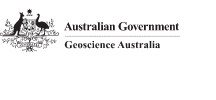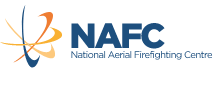
Working closely with the National Aerial Firefighting Centre, Geoscience Australia and FrontiersSI, this project extended the work previously completed through the Bushfire and Natural Hazards CRC Identifying water sources using satellite imagery project. Researchers have now delivered a prototype workflow for a spatial product whose primary use is identifying the locations of accessible water bodies with increased accuracy, so that aerial firefighters can more quickly and effectively extinguish fires. This prototype can now be used by NAFC and GA to improve the accuracy of location data for aerial firefighting.
During active fire events, aerial firefighting units are dispatched by members of the National Aerial Firefighting Centre (NAFC). NAFC members use a variety of data sources to help identify locations for helicopters and fixed wing aircraft to access water. For effective decision making, current and accurate information is critical.
This phase of the research focused on the translation of the proof of concept work undertaken as part of the Black Summer research program and actively engaged NAFC, NSW RFS and Victoria's CFA to deliver a prototype workflow that can be used to:
-
identify aircraft-accessible water bodies
-
contribute to aircraft selection and allocation based on access to water
-
contribute to efficient use of aircraft
-
provide advice to air desks, air bases and air crews to assist in their situational awareness and decision-making.
This project identified how existing Geoscience Australia (GA) Digital Earth Australia (DEA) satellite-based data products could be tailored to suit the needs of NAFC.
Specifically, the project identified additional attributes that would add value to the existing DEA Waterbodies product for users in the emergency management sector and create the associated framework for implementation by Geoscience Australia. FrontierSI hosted an interactive user needs workshop with emergency management agencies from across Australia. This workshop provided insight into how current waterbody datasets are being used and what additional waterbody attributes are needed by users for pre-planning decisions.
The project team developed a localised prototype workflow, which implements and updates these new attributes. The prototype was developed with the intention that this workflow is implementable by GA. Through communication with the DEA team responsible for the data production and the Flying Hellfish team responsible for cloud services, the workflow was modified to suit the production environment. In the interim, this workflow can be run by NAFC to extract necessary information from the waterbodies product while GA works through implementing the upgrades.
This project was successful in identifying and implementing user-driven improvements to the DEA Waterbodies product, and concluded with a set of recommendations for future development for both NAFC and GA. See the Final Report (in Publications tab on this webpage) for more information.
| Year | Type | Citation |
|---|---|---|
| 05/2023 | Report | Identifying water sources for aerial firefighting - final report |
| Date | Type | Title |
|---|---|---|
| 2 May 2023 | Presentation | Caitlin Adams - 2023 Natural Hazards Research Forum presentation |
| 16 August 2023 | Hazard note | Hazard Note 3: Identifying water sources for aerial firefighting |





